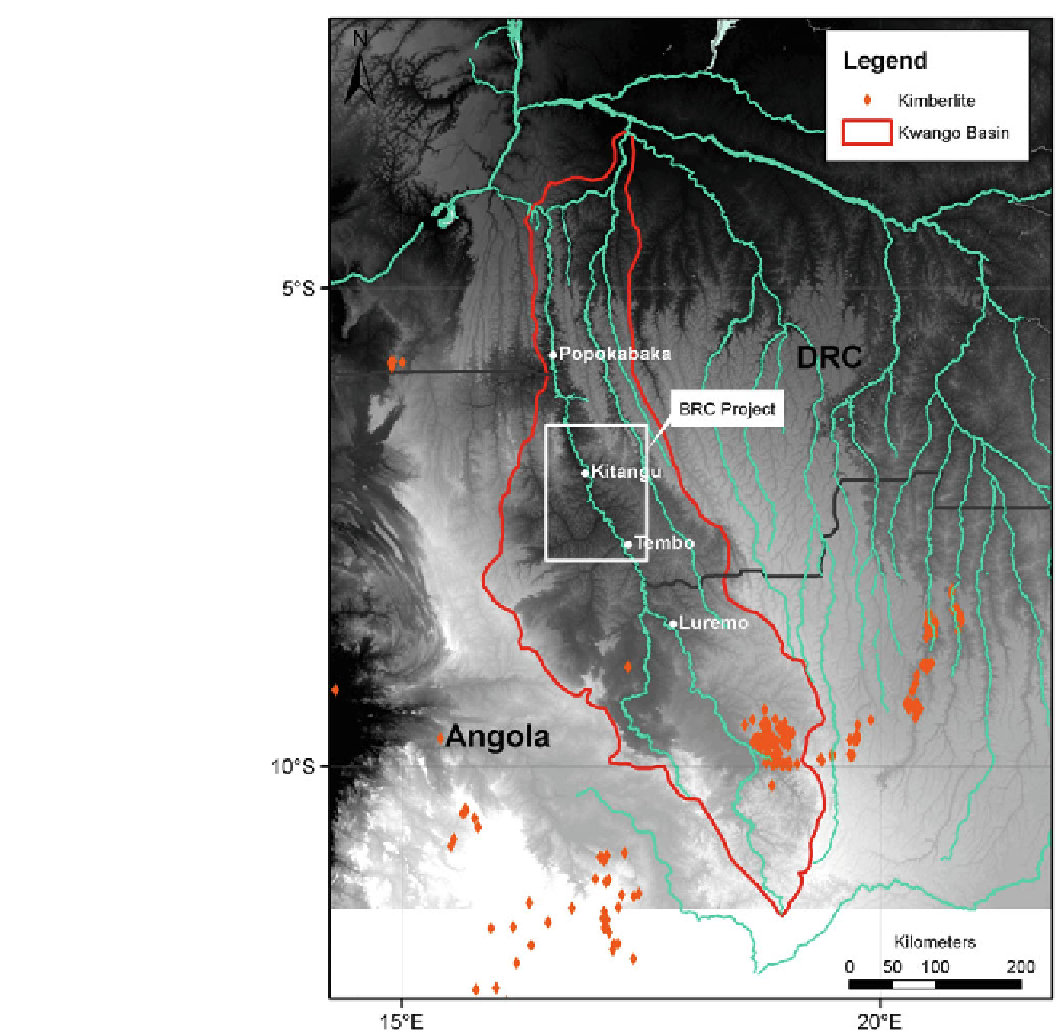Geology Reference
In-Depth Information
Fig. 16.1
Catchment area (in
red
) of Kwango/Cuango River
basin. Main project area is
highlighted
by the
rectangular
block.
Orange diamonds
are
kimberlites
prospecting mission in 1922-1923. Prospecting was done by
digging pits and drilling holes using Banka 6
00
and 4½
00
auger. The best recoveries and highest grades were obtained
between Popokabaka and the Fufu tributary of the Kwango
(Fig.
16.2
), where five samples produced 36 diamonds
weighing 1.8 cts (average size of 0.05 cts/stn). No diamonds,
however, were reported from Kasongo Lunda to the
Francois-Joseph Falls further upstream. They believed that
this was due to the presence of thick overburden sands and
large boulders of silicified sandstone (Smith and Faucett
1922
). The diamond grades between Kasongo Lunda and
Popokabaka varied from 0.3 to 1.5 cts/m
3
. Simultaneously
diamonds with grades between 0.04 and 0.5 cts/m
3
were also
found in the neighbouring Wamba drainage basin east of the
Kwango River. The average diamond size in the Wamba
decreased from 0.06 cts/stn (12 diamonds totalling 0.7 cts) at
Kabongo to 0.03 cts/stn (12 stones totalling 0.29 cts) at
Lukuni (Fig.
16.2
) (Smith and Faucett
1922
; Grant
1924b
).
Young, however, believed that diamonds must increase
southward, and this was confirmed by prospectors Johnston
and McVey who had found diamonds much larger in size
along the Cuango River to the south in Angola (Fieremans
1977
). Hence
'
Mission Kwango
'
was initiated by
SGK
and between 1924 and 1925 a more detailed sampling
programme was conducted along the Kwango River and its
tributaries between Popokabaka and Kasongo Lunda.

Search WWH ::

Custom Search